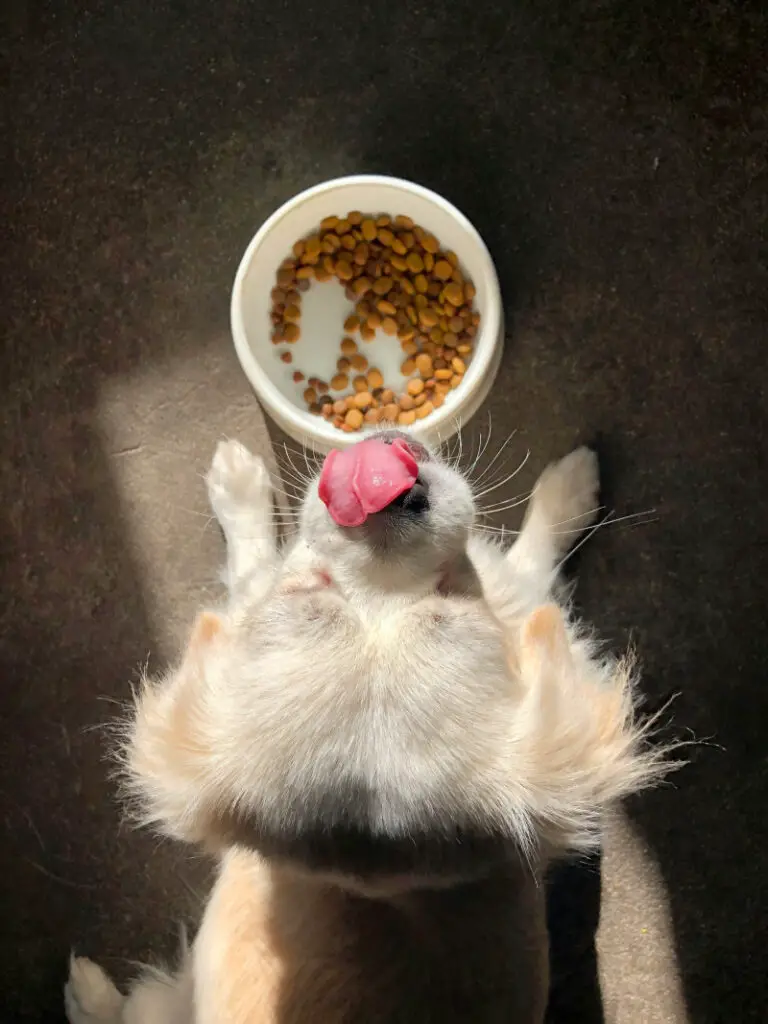The plantain or banana is one of the most common fruits in any kitchen. Not only is it delicious, inexpensive, and versatile, but it is also considered a satiating and nutritious source of energy. As if that were not enough, it has its own wrapper, which is why it is an ideal sandwich to take everywhere. But Can dogs eat bananas, are bananas just as good for dogs as they are for their owners?
Keep reading below to learn about the pros and cons of giving your dog a banana, the best ways to consume it, recommended amount of banana, warnings, and easy recipes to make at home.
Table of Contents
Are bananas good for dogs?
Yes, dogs can safely eat plantains and bananas. Being a natural food rich in vitamins, minerals, and fiber, its consumption is not only considered safe but also beneficial. However, bananas are a fruit rich in sugars, which is why they should always be eaten in moderation.
It is important to give it as an occasional treat, not as part of the regular diet. Remember that dog-friendly fruits and vegetables should only be a supplement to reinforce nutrition and reward the pet.
Bananas specifically are very sweet, tasty, and rich in essential nutrients such as potassium, magnesium, various vitamins, and a type of fiber called pectin.
6 benefits of banana for dogs
Let’s take a closer look at some of the main benefits and healthy properties that bananas offer in a canine diet…
1. Promotes numerous processes in the body (potassium)
Thanks to its high potassium content, bananas support healthy kidney and heart function, promote better bone density, and regulate fluid levels in the body, among other vital processes.
2. Supports the function of the gastrointestinal system (fiber)
Bananas contain pectin, a type of dietary fiber that supports digestion and promotes regular bowel movements.
3. Contributes to better bone health (magnesium)
Another abundant nutrient in bananas is magnesium, an essential mineral to promote and maintain normal bone density, as well as to achieve better use of vitamins and other minerals in the body.
4. Supports different brain and body functions (Vitamin B6)
Vitamin B6 is a critical nutrient that helps regulate fluid balance, build protein, and regulate hormones.
5. Helps strengthen immunity (vitamin C)
Like many other fruits, bananas contain vitamin C, one of the most important antioxidants to strengthen your dog’s immune system.
6. Improves coat and skin health (biotin)
As if that were not enough, bananas provide biotin, a B vitamin that promotes good skin health and the growth and beauty of the coat.
It should be noted that, despite these benefits, the banana is a source of carbohydrates. Its excessive or too frequent consumption in dogs is usually contraindicated.
See below: What Fruits and Vegetables Can Dogs Eat? Which ones are prohibited?
How to give a banana to a dog?
Dogs can eat ripe bananas in various ways, either raw or frozen. Small portions of the freshly chopped fresh fruit are usually given to them, but some owners may find that their pet prefers the previously frozen banana.
In the eyes of the animal, the change in texture and temperature make it a different treat.
Whatever the form of consumption, there are two key steps to consider:
- Control portion size. As a general rule, it is recommended to give small portions as an occasional snack. The recommended amount varies depending on the size of the particular dog.
- Remove the shell. Be sure to remove the peel from the banana before your dog eats it. Also, consider that for him, the skins smell just as appetizing as the fruit, so he may be tempted to eat them if you leave them insight.
Note. Consult the veterinarian before introducing bananas into a dog’s regular diet. This can give you precise indications as to the amount and frequency of consumption according to size, weight, and specific dietary needs.
Fun ideas for your dog to eat bananas
- Fresh ripe banana slices. It is the fastest and easiest way; simply peel the banana, cut several not very thin slices and give them as a treat.
- Frozen banana. Cut a ripe banana into bite-sized pieces, put them in the freezer, and offer several to your dog once they’re hard.
- Ripe banana with other ingredients. Use the banana as a complement to serve more appetizing meals and treats. For example, banana slices spread with peanut butter, frozen banana pieces wrapped in plain yogurt, banana bits mixed in with regular food, etc.
- Banana stuffed toy. This fruit can be a good filler if you have fillable toys for dogs, such as the popular Kong. You can make it with banana alone or mixed with other ingredients. A good recommendation is to fill the toy with mashed banana and lightly freeze it to make it even more stimulating.
What is the most suitable portion of banana?
Since it is a fruit high in sugar, dogs should eat bananas sparingly. In general, it is said that a small breed dog should not eat more than 2 or 3 slices of banana at a time, while medium dogs and large dogs should not exceed the serving of ½ banana (normal size) in a day.
It should always be given as a reward or treat, never as a substitute for a meal.
Remember. Puppies have specific diets that support their growth and development. Consult the veterinarian about the use of bananas as a treat and the most appropriate form of consumption.
How often should they eat it?
According to experts, a balanced canine diet should follow the 90/10 rule, meaning 90% of calories should come from regular dog food and only 10% should come from treats.
This means that a dog should eat small portions of bananas on an occasional basis, never habitually… much less daily. Minimize your consumption to only 1 time per week.
It may interest you:
- Can a Dog Eat Grapes Safely? Risks, Signs, Portion
- Can Dogs Eat Watermelon? Consumption, Portion, and Warnings
Easy recipe: Homemade banana peanut butter oatmeal treats
Basic ingredients
- 1 beaten egg
- 1 ripe banana, peeled and mashed
- 3 tablespoons of peanut butter
- 1 cup of oatmeal
- 1/3 cup oat flakes
Steps
- Preheat the oven to 300°F (150°C).
- Meanwhile, mix all the ingredients in a bowl until they are completely integrated; let the mixture rest for about 5 minutes.
- Using a tablespoon, form small balls of dough and place them on a baking sheet lined with wax paper. Press the balls with the back of the spoon to shape them into cookies.
- Bake for 40-45 minutes, remove from oven and allow treats to cool completely.
- Store a portion of the treats in an airtight container and place them in the refrigerator. Freeze the rest for future use.
Contraindications and side effects of bananas in dogs
As we have mentioned throughout the article, the banana is a fruit rich in carbohydrates and sugars (fructose, glucose, and sucrose), whose excessive consumption in dogs can lead to a nutritional imbalance, weight gain, and therefore result in obesity. However, there are other contraindications and negative effects associated with inadequate banana intake.
Why could too much banana be bad for my dog? Here are the main caveats to keep in mind…
Gastrointestinal disorders
First of all, it is noted that some dogs are not able to digest bananas very well, which is why they may experience stomach upset and diarrhea. Likewise, the great contribution of dietary fiber can cause constipation when the amount ingested is not limited.
Overweight, obesity, and diabetes
The high sugar content of ripe bananas can be problematic for dogs that eat too much fruit. The number of carbohydrates in the canine diet must be limited, so excess can end up causing considerable weight gain.
This is especially true if the dog does not get enough physical exercise to expend all that energy, or if the excessive banana consumption continues over time.
If the problem is not corrected, the pet could face an increased risk of developing obesity and diabetes.
Allergies
As with any other food, your dog may be allergic to bananas. As a result, the pet could experience swelling, hives, difficulty breathing, sneezing, coughing, or other allergic symptoms.
If this is your first time giving a dog a banana, be sure to start with a very small portion and watch your dog closely to see how it reacts.



